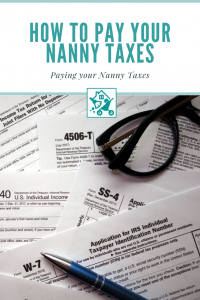Paying your Nanny Taxes

Most families are not tax specialists. So when they first hire a household caregiver or nanny, fulfilling the tax requirements of the IRS can seem at first a bit overwhelming. Nanny payroll services may seem an attractive option at first – until you consider the overall cost. With setup fees and other costs, a payroll service could cost you more than $1,000 in the first year alone.
But with just a little bit of initial effort, you can learn how to do it yourself, and NannyPay software is here to help. For over twenty years, NannyPay has been helping new household employers understand and comply with the Nanny Tax Laws – and save money too!
Here is a quick primer that will provide you with the basics, and demonstrate “paying by the rules” is really not that difficult to learn or do, particularly if you use NannyPay to help you. And in fact, there are significant benefits to paying “above the table”:
Benefits of Paying the Nanny Tax
A family (the employer) could be eligible for a tax break and will certainly have fewer worries if the IRS audits their accounts.
A nanny (the caregiver) would also gain the same peace of mind. Secondly, it will be easier for them to qualify for benefits such as:
- Medicare coverage and social security income on retirement.
- Unemployment benefit (provided they lose the job without their fault)
- An employment history and income that is verifiable when they want to obtain a home mortgage or an auto loan.
Process of Paying Your Nanny Taxes
Here is a concise summary of what you need to do:
1. Obtain Your Tax Identification Numbers
To report nanny taxes, you will require both state and federal tax ID numbers. You can obtain your FEIN (federal employer ID number) from the IRS. Once you have it, you can use it to get your state ID number from the relevant tax agency.
2. Compute and Track the Payroll
For each pay period, you will have to correctly compute the gross pay of your nanny, the amount of tax withheld from them, and the corresponding employer taxes.
3. File Your Taxes Year-Round
You will be required to file your state tax returns usually on a quarterly basis. (In some states, the filing requirement may be annual or monthly). You will need to send to the IRS your 1040 estimated payments four times a year.
4. Fill out Your Tax Forms at the Year-End
a. Each year by the end of January, you will have to provide your caregiver with a Form W-2, which they can use to file their tax return.
b. You will have to fulfill the SSA requirements by filing Form W-2 Copy A and Form W-3. This will inform the SSA that you have correctly withheld a FICA tax from your nanny and remitted your own FICA tax throughout the year.
c. You will be required to prepare a Schedule H, which you can file along with your federal tax return.
d. You may have a state requirement to fill out the Annual Reconciliation Form. This will provide a summary of the state income tax that you withheld from your caregiver.
Does Filing Your Nanny Tax Involve a Lot of Work?
According to the estimates released by the IRS, an average family may have to spend about 50 to 55 hours a year to accurately manage their nanny tax process so the answer is yes. Even after the tax cuts of 2017 which helped so many people and the economy the tax process is still complicated and time-consuming. This also includes managing your nanny’s payroll, apart from completing all the tax filing requirements.
Choose NannyPay DIY Payroll Software
You can cut down your time and effort and accurately file your nanny taxes using NannyPay DIY payroll software. The reliable and user-friendly NannyPay DIY program will save you the costs of hiring a tax professional, and ensure that when tax day comes, you are fully prepared to file your nanny taxes correctly.








Leave A Comment
You must be logged in to post a comment.